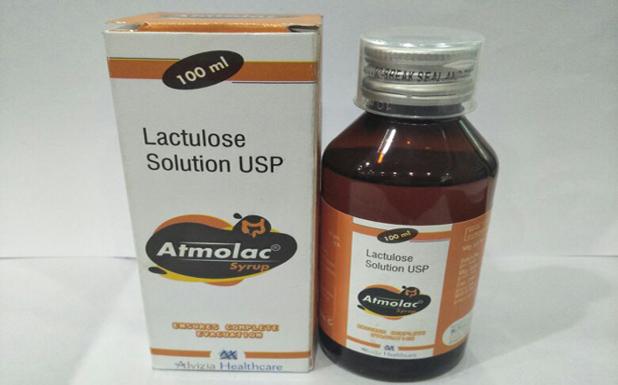
Composition
- Each 5 ml Contains:
- Lactulose
Packing
- 100 ML
Syrup
MRP
- 112
Overview
Lactulose is a synthetic sugar especially used to treat constipation. It is metabolised in colon into products that draws water out from the body and into the lumen result in softening of stools. It also reduces the amount of ammonia in systemic circulation in patients with liver disease. It functions by drawing ammonia into the colon from blood where it is excreted from the body. Moreover, there have also been data that demonstrate the capacity of lactulose to minimize the formation of gallstones and even some studies regarding the experimental use of lactulose in developing novel anticancer activity owing to its ability to bind galactin carbohydrates involved in various types of tumor progressions.
Indications:
- Laxative in the treatment of chronic constipation in adults and geriatric patients.
- As an adjunct to protein restriction and supportive therapy for the prevention and treatment of portal-systemic encephalopathy (PSE).
- Lactulose is used to minimize the formation of gallstones.
Pharmacology
Mechanism of action:
Lactulose is a synthetic disaccharide derivative of lactose containing of one molecule of galactose and one molecule of fructose. In large intestine, saccharolytic bacteria break down lactulose into organic acids like lactic acid and small amounts of formic and acetic acids. This results in production of hydrogen and methane enhance intraluminal gas formation, peristaltic gut motility, and produce an osmotic effect that facilitates an increase in the water content of stool as well as associated stool softening. All of these actions ultimately assist in facilitating and increasing the frequency of bowel movements in patients experiencing constipation, although it may take 24 to 48 hours after using the medication for this laxative effect to become evident.Pharmacokinetics:
When administered orally, less than 3% of the given dose of lactulose solution is absorbed by the small intestine. The remaining unabsorbed lactulose reaches the large intestine where it is metabolized - but even then, negligible quantities of unchanged lactulose or its metabolites are absorbed across the colon.It has been registered that the oral LD50 of lactulose is 48.8 mL/kg in mice and more than 30 mL/ kg in rats.
Side Effects
- Diarrhea
- Flatulence (gas)
- Nausea
- Stomach pain or cramps
- Vomiting
Contraindications
- Not to be used in patient allergic to lactulose or any other medicine in the past.
- Can't digest a sugar called lactose (lactose intolerance).
- Cannot be used in rare health problem where the body cannot process a sugar called galactose (galactosaemia).
- Cannot be used in diabetic patients (as lactulose may affect your blood sugar levels).
- Do not give lactulose to a child under the age of 14 years if not recommended by the doctor.